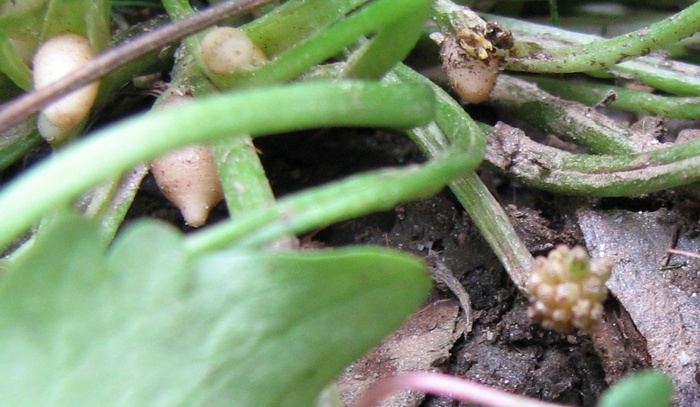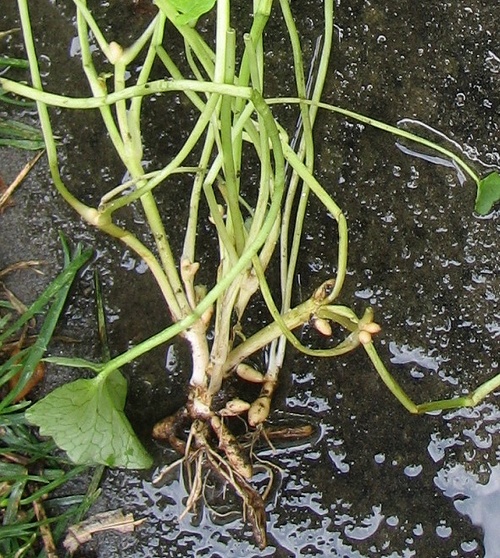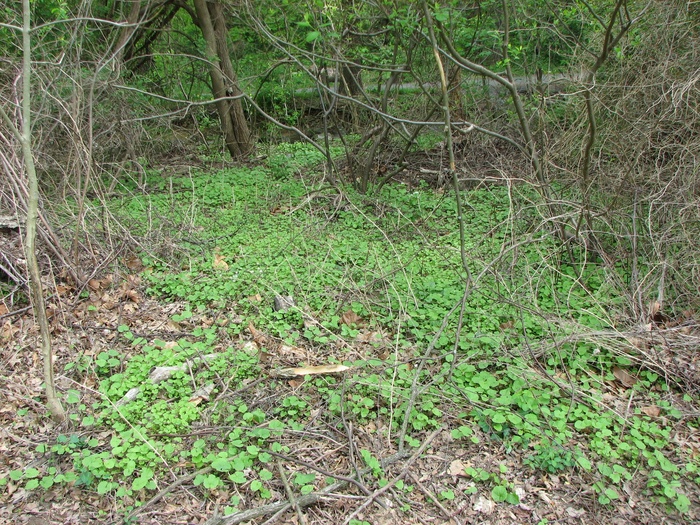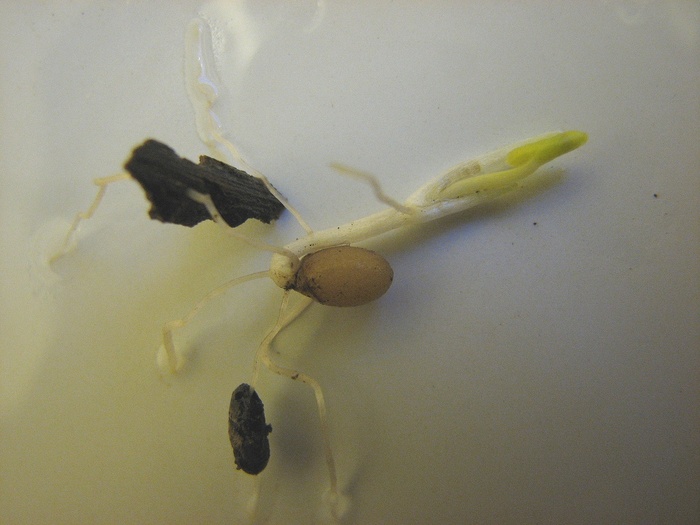

| Part I | How lesser celandine grows |
| Part II | Herbicide considerations |
| Part III | Notes, including locations and spray history |
Lesser Celandine
Photographs and Notes
Photos taken in Sligo Creek Park except as notedPart I How Lesser Celandine Grows
How to recognize lesser celandine
Lesser celandine has eight petals, and resembles a short-stemmed buttercup growing from a dense mat of leaves. It is an early bloomer, starting in mid-March. By June the leaves have disappeared for the year. Celandine belongs to the buttercup family (Ranunculaceae).Lesser celandine has been introduced to gardens in the United States several times. The plant is found across Europe and Asia. It thrives in wetlands, and is uncommon on higher, drier sites.
Winter Aconite is an even earlier bloomer in the buttercup family. It has escaped to Sligo, but has not become a serious invasive plant.
| Lesser celandine April 11, 2006 | Winter Aconite March 8, 2004 |
 |
 |
How lesser celandine affects surroundings
Dense mats of lesser celandine cover acres in Little Falls near the Capitol Crescent Trail. In woods of Northwest Branch woods close to the Wheaton Horse Barn, smaller mats threaten Virginia bluebells.At least three fields in Sligo were heavily matted in 2004. One was (and still is) the overgrown baseball field directly above Colesville Road. Native violets, spring beauty, mayapple and trout lily cannot compete. Less common wetland plants such as skunk cabbage and wild ginger (present in the Montgomery County part of Sligo only between Maple Avenue and Pine Branch) seem vulnerable too.





The paper square marked the site. April 12, 2007



Growth of clumps
Clumps consist of separate plants, young and old. The oldest celandine plants, presumably in the middle of an area of several square yards, are no more crowded than plants at the periphery; apparently the older plants die, leaving room for new ones. These seem to be spread mainly, perhaps entirely, by vegetative means, not seed.New celandine plants with several inches space between them probably start from seed.




(Sand was deposited on grass at the soccer field.) May 4, 2007


Buds, Flowers, and Seeds
By February the older plants, those with at least five leaves, produce globular buds that will flower in mid-March.



which will become seeds (achenes). April 12, 2007

When petals fall, the pistil sections that will become seeds enlarge and darken at the tip. Many embryonic seeds are reported to naturally abort, but this has not kept celandine in Sligo from easily spreading.
(The string is attached to a tag for identification.) April 12, 2007



The left side shows several bulbils, which will produce new plants. May 4, 2007

and is open at the same time. The pistil looks similar. May 5, 2007

Bulbils, tubers, and roots
Under the ground celandine has a number of tubers, with usually one that is especially long. Above the tubers are white roots. In May before plants close down for the year, stems lengthen, and buds of new tubers, called bulbils, sprout from the leaf stems. Soon afterward stems lengthen and drop, bringing bulbils into contact with the ground if they were not already. In spring each bulbil sprouts roots and a leaf. Judging from the appearance of plants in February, young plants will produce three to four leaves this year, but no flowers.








Roots and stems can pierce objects
Note this is a young plant. Feb. 23, 2008

Perhaps the three coils are root material.



Submitted by Sally Gagné
February 2008
| Part II | Herbicide considerations |
| Part III | Notes, including locations and spray history |